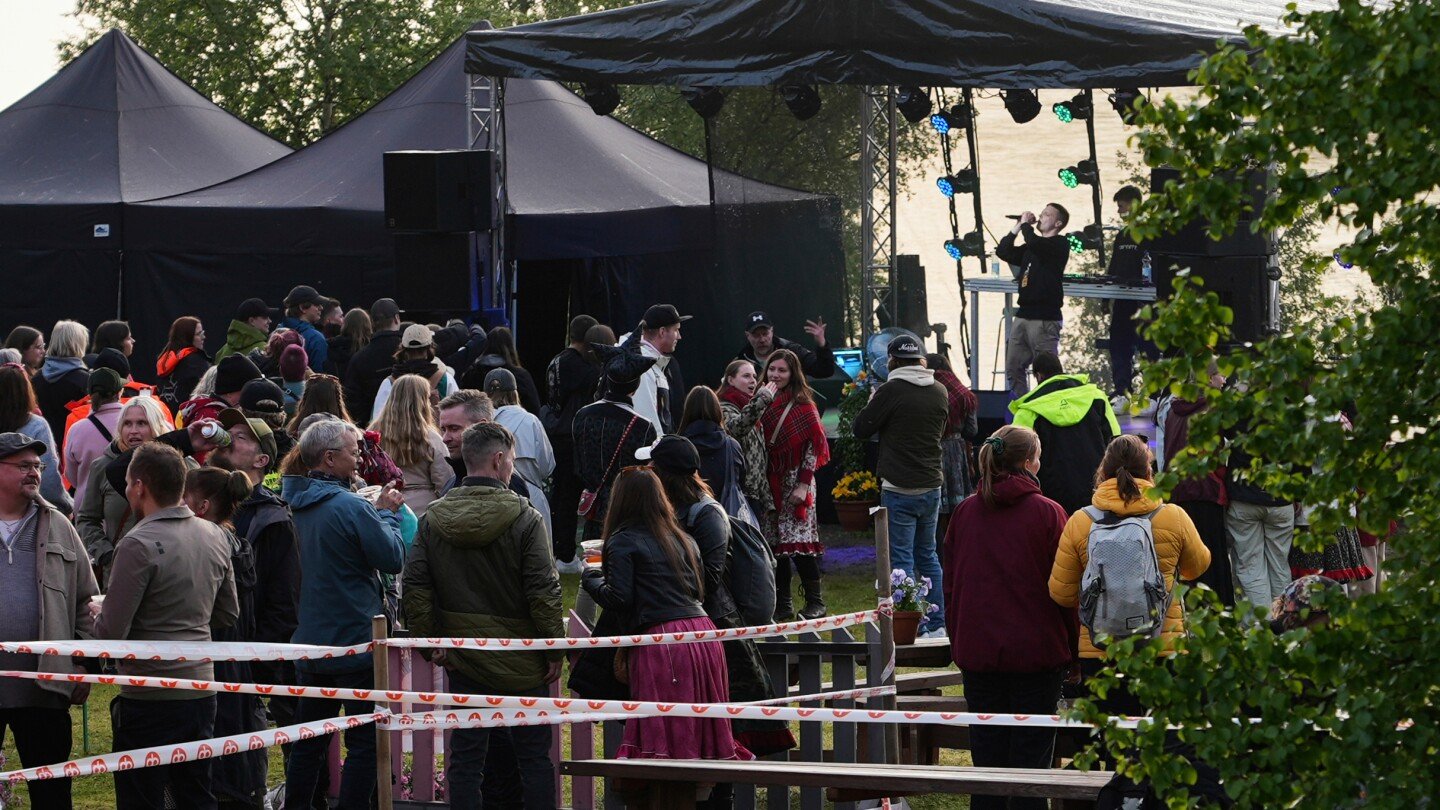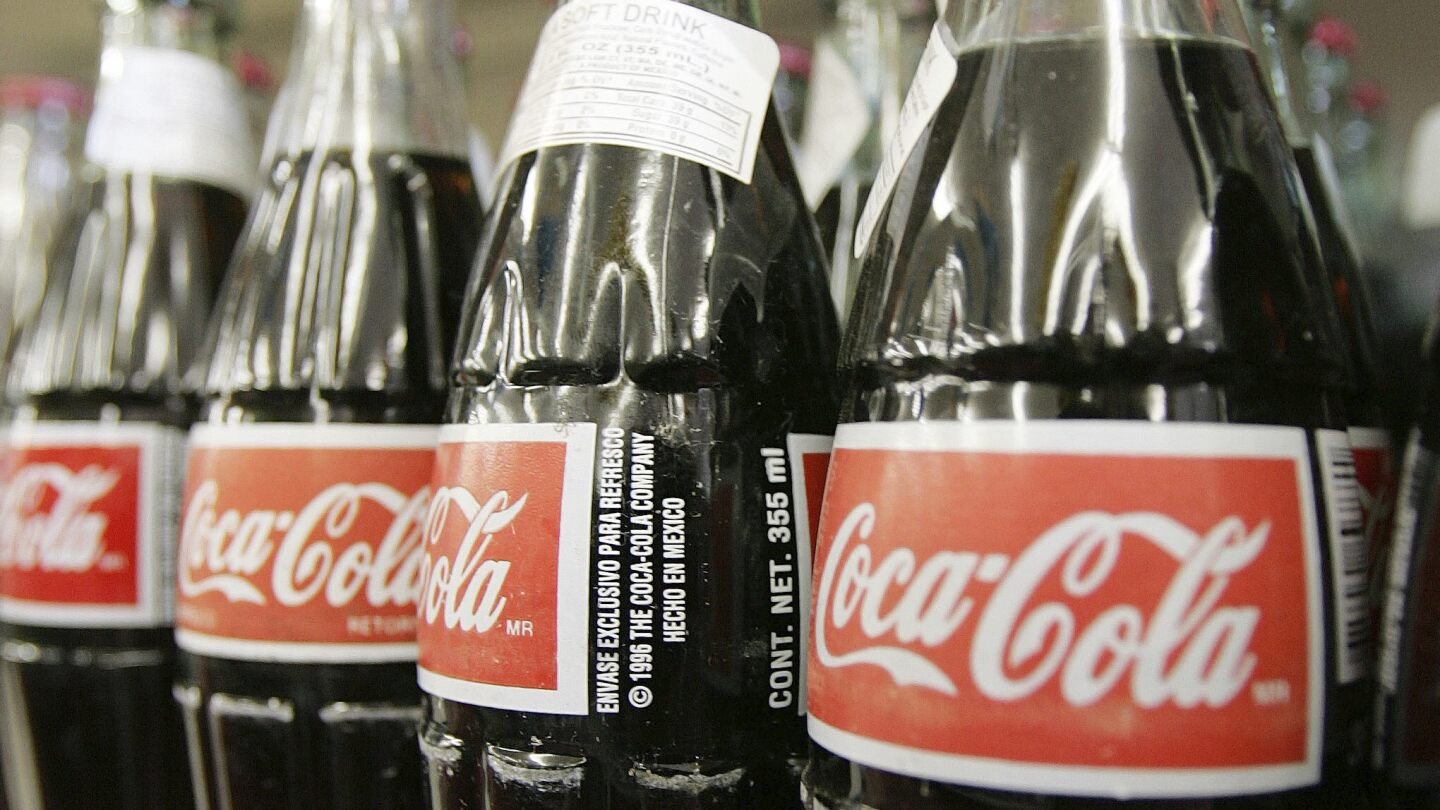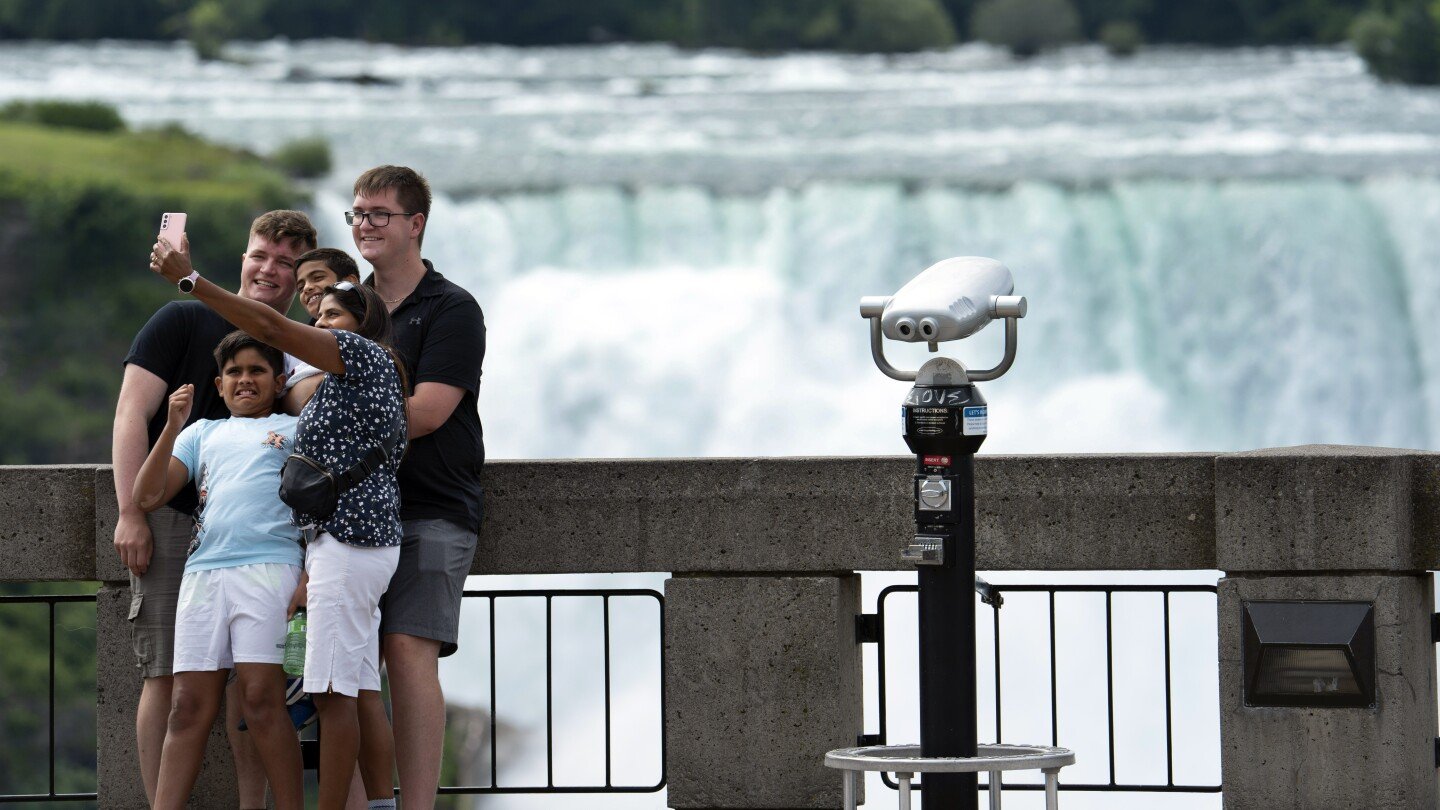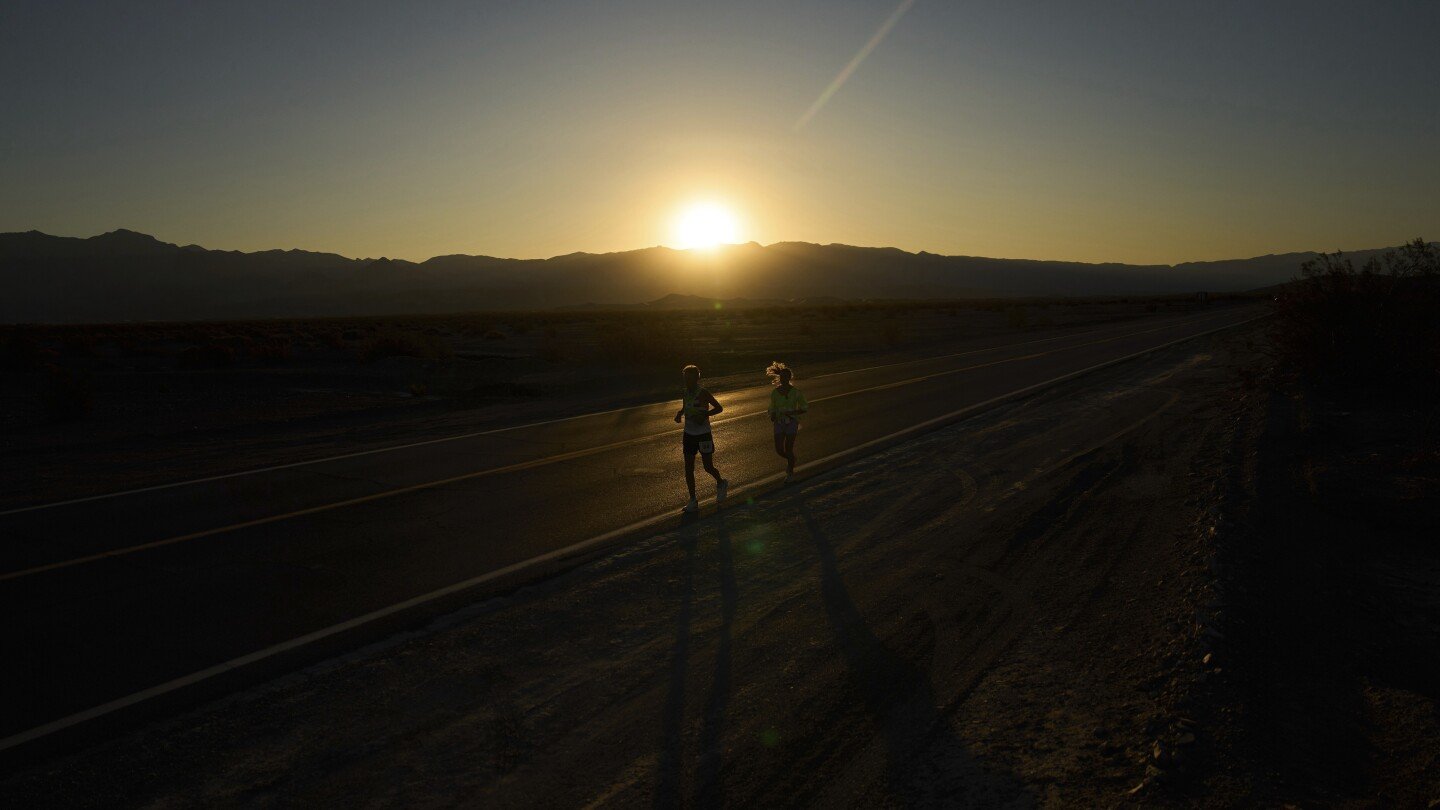Lifestyle
A rap festival near the Arctic Ocean delights crowds under the midnight sun

UTSJOKI, Finland (AP) — It was well past midnight when Mihkku Laiti appeared on stage to perform at an open-air music festival in the Finnish village of Utsjoki, north of the Arctic circle.
Despite the time, Lapland’s famous midnight sun was still up. During the summer months the sun doesn’t go down at all in Utsjoki, which is less than 50 kilometers (30 miles) from the Arctic Ocean.
In the glow of blue spotlights, Laiti rapped while a crowd of more than 300 listened, some of them singing along and dancing. Like the majority of Utsjoki’s residents, Laiti is a member of the Sámi — Europe’s only recognized Indigenous people — and he rapped in his native Sámi language.
Laiti, also known by his stage name “Yungmiqu,” is the founder of the Loktafeasta rap festival. He first found fame on the television show Talent Finland, where he surprised the judges by rapping in the gákti, the traditional dress of the Sámi. It is brightly colored and often characterized by plaits, pewter embroidery and a high collar.
The festival brought Laiti’s Indigenous culture to the spotlight, though some of his fans could not understand what he was saying. That didn’t seem to bother anyone at the Loktafeasta as the festival mixed performances from artists in both Sámi language and Finnish.
Some drank beer and ate sausages and the crowd seemed to enjoy the summer festival atmosphere despite spells of rain.
“When I rap about my culture … I want to show how being Sámi is like from my point of view,” Laiti told The Associated Press.
“Because there are many stereotypes about Sámi people and I want to like normalize … the basic stuff we do and not romanticize those things,” he said. He added that he has not worn the gákti for performances for about a year now to show people that it is possible to be Sámi and wear whatever you want.
Europe’s only recognized indigenous people
The Sámi traditionally live in Lapland, which stretches from northern parts of Norway to Sweden and Finland to Russia. However, of the roughly 10,000 Sámi people living in Finland, the majority now live outside their homeland.
The Sámi people were oppressed for centuries by the powers that ruled and exploited their lands, including bans of the use of their native tongues and efforts to suppress their culture. In the past decades, there have been efforts to reestablish their rights, including the right to use Sámi languages which is now guaranteed in the Finnish constitution.
Today, the historically semi-nomadic Sámi people have modern lifestyles. The few who still tend reindeer do so with modern vehicles, digital tools and regulated land use.
However, there is an effort to preserve the Sámi’s cultural identity. Distinctive Sámi clothing was worn by many at Loktafeasta, as is typical on special occasions.
Artists rap in Finnish and Sámi language
At the festival, Laiti mostly wanted his fans to be happy and enjoy the music.
“I want people to feel joy, of course, and I just want people to be happy that we have this kind of festival here in Utsjoki,” he said with a smile.
Among the other acts was a duo comprised of self-confessed old school tango crooner Jaakko Laitinen and rapper Jouni J. They also reside in Lapland and perform in Finnish.
“I see a connection from the hip hop and the tinkering with words to the old Finnish like Kalevala freestyling folk poetry,” said Laitinen, referring to Finland’s national epic about the Earth’s creation.
“So that obvious connection and the Finnish tango … is part of our soul and heart,” he added.
A world away from the birthplace of rap music in the Bronx
Although the duo’s songs were a world away from the birthplace of rap music in the Bronx in New York City, their performance brought joy to Utsjoki’s locals and visitors.
“Music travels and music brings people together. It’s the magic of the international language of music,” Laitinen said.
Lifestyle
Trump says Coke will shift to cane sugar. But increasingly, shoppers want no sugar in their sodas

The debate over whether Coca-Cola should use high-fructose corn syrup or cane sugar in its signature soda obscures an important fact: Consumers are increasingly looking for Coke with no sugar at all.
Coca-Cola Zero Sugar, which was introduced in 2017, uses both the artificial sweetener aspartame and the natural sweetener stevia in its recipe. It’s one of Coke’s fastest-growing products, with global case volumes up 14% in the first quarter of the year. By comparison, the company’s total case volumes were up 2%.
PepsiCo also noted Thursday that 60% of its sales volumes in major markets in the second quarter came from low- or no-sugar drinks.
“When you look at colas, the percentage of growth coming from zero sugar is significant,” said Duane Stanford, the editor and publisher of Beverage Digest.
Coca-Cola Co. hasn’t confirmed a presidential pronouncement
The scrutiny over Coke’s sweeteners began Wednesday, when President Donald Trump announced that Atlanta-based Coca-Cola Co. had agreed to switch to using cane sugar in the regular version of its beverage manufactured in the U.S.
“I have been speaking to Coca-Cola about using REAL Cane Sugar in Coke in the United States, and they have agreed to do so,” Trump wrote on his social media site. “I’d like to thank all of those in authority at Coca-Cola. This will be a very good move by them — You’ll see. It’s just better!”
Coca-Cola didn’t confirm the change. In a statement, the company said it appreciated Trump’s enthusiasm and would share details on new offerings soon.
Stanford said he doubts Coca-Cola will fully shift away from high fructose corn syrup, which has sweetened Coke in the U.S. since the 1980s. There would be tremendous supply chain and logistics headaches, he said, and the U.S. doesn’t make enough sugar for Coke’s needs.
He expects the Atlanta-based company will offer a cane sugar-sweetened version in the U.S. just like its rival Pepsi has been doing since 2009. He noted that Coke has indulged U.S. fans by importing Mexican Coke, which is made with cane sugar, since 2005. Coke positions Mexican Coke as an upscale alternative and sells it in glass bottles.
A rush to defend high fructose corn syrup
The corn industry wasn’t happy with the speculation. In a statement Wednesday, Corn Refiners Association President and CEO John Bode said replacing high fructose corn syrup with cane sugar makes no sense and would cost thousands of American manufacturing jobs.
Shares in ADM, a maker of high fructose corn syrup, dipped nearly 2% Thursday after Trump’s announcement.
In a message on X, Coca-Cola defended high fructose corn syrup, saying it’s no more likely to contribute to obesity than table sugar or other full-calorie sweeteners.
“It’s safe; it has about the same number of calories per serving as table sugar and is metabolized in a similar way by your body,” the company said. “Please be assured that Coca-Cola brand soft drinks do not contain any harmful substances.”
The Food and Drug Administration also says there is no evidence of any difference in safety among foods sweetened with high fructose corn syrup and those that sugar, honey or other traditional sweeteners.
US consumers are seeking more options
Soft drink preferences are highly subjective, as anyone who has been in a Pepsi vs. Coke or 7-Up vs. Sprite debate knows. But recent trends indicate that Coke and other drink makers need to focus on the kinds of low- and no-sugar drinks that a growing number of consumers are seeking, according to Stanford.
He said his data shows original Coke was the top seller by volume in the U.S. last year, with 19% market share, while Coke Zero Sugar was seventh and had a 4% market share. But Coke Zero Sugar’s share grew 10%, while original Coke’s share was flat.
Paige Leyden, the associate director of food service, flavors and ingredients reports at the market research company Mintel, said drinks with a health halo like Olipop — which has 1 gram of sugars compared to original Coke’s 65 grams — are also pressuring legacy soda makers. Mintel expects full-sugar sodas will see a 3.4% rise in U.S. sales this year, while diet sodas will see 11.8% growth.
Still, nutritionists suggest avoiding added sugars, no matter the form, since they provide empty calories with no nutrients. The 2020 U.S. dietary guidelines advise people to limit foods and beverages higher in added sugars, and say children under 2 should not be fed them at all.
Health Secretary Robert F. Kennedy, whose nutrition views often diverge from mainstream nutrition science, has spoken out against sugar. His agency is expected to release updated nutrition guidelines later this year.
“There’s things we’ll never be able to eliminate, like sugar,” Kennedy said at an April news conference. “And sugar is poison, and Americans need to know that.”
Aspartame and other artificial sweeteners are also named as a concern in a government report Kennedy issued in May.
___
AP Health and Science Editor Jonathan Poet contributed from Philadelphia.
Lifestyle
How to survive and thrive on a family road trip

If you’re going to be road-tripping with your family this summer, get ready to embrace unexpected moments of both connection and inevitable chaos.
I found both when I packed up the car with my husband and two kids — one of them a teenager — for the eight-hour drive from Boston to Niagara Falls. We had taken long road trips as a family in the past, but our kids, now 8 and 14, were older. My son, firmly in his “closed-door, don’t talk to me” phase, wasn’t exactly thrilled about spending over 460 miles trapped in our smallish Nissan Rogue. We also live in a part of the country where we don’t spend much time in cars in our everyday life.
How would we all manage the close quarters?
Here’s some of what I learned — along with advice from the experts — about not only surviving a family road trip but having a good time:
First, why do it?
Many road-trip veterans cite the chance to bond and create family memories. Eighteen-year-old Samara Worsham, for example, spent 30 days crossing 25 states with her family in 2022. Now preparing to leave for college, she says she cherishes that time on the road.
“There were long stretches with no cellular data, leaving us nothing to do but talk,” she said.
Along with visiting U.S. landmarks, Worsham’s fondest memories include hotel pool swims with her siblings, and her father’s mission to sample every fast-food chain across the country.
There are practical advantages to the family car trip too.
“It’s more economical than flying, especially with a big family,” says Jamie Davis Smith, a lawyer and writer from Washington, D.C., who takes a road trip every year with her husband and children. “Plus, you don’t have to rent a car at the destination.”
Get family input on the itinerary
Alain Robert, founder of The Travelologist, a Canadian travel agency, recommends including the whole family in planning.
“Ask what they’d like to see or do. Build around everyone’s interests,” he advised. “Once you have a backbone itinerary, share it and manage expectations.”
My family, in particular the kids, wanted to get there as soon as possible. They had their eyes on the destination, not the journey.
Include some cheesy stops — if you can take the time
Davis Smith said her family loves to discover quirky roadside attractions; on one trip, they had fun stopping at the Unclaimed Baggage Center in Scottsboro, Alabama — a store that sells lost airline luggage.
Inspired, I downloaded the Roadtrippers app and mapped out a few detour-worthy stops. Our shortlist included the Jell-O Museum in LeRoy, New York, as well as the Schuyler Mansion (of “Hamilton” fame) in Albany, New York.
But best-laid plans… We quickly realized that an eight-hour haul didn’t leave much wiggle room for exploration. Lesson learned: Keep daily driving to six hours or less if you want time to explore. We didn’t have time for either of those two stops.
Whether you bring your pet or not, prepare for extra costs
We briefly considered bringing Rosie, our 2-year-old Cavalier King Charles Spaniel, but the hotel we’d booked at Niagara wasn’t dog-friendly. No friends were available to watch her, so at the last minute, we boarded her at our vet — a first for Rosie.
We hadn’t expected she would need two new vaccines, and we had to squeeze in a vet appointment two days before departure. This meant a steep bill the morning we left, and boarding costs awaiting us when we returned.
Travel journalist Kelly Burch, who road-tripped around the U.S. for seven months with her husband, two kids and senior dog, warned that pet policies on the road can be unpredictable. One budget hotel near Yellowstone National Park wouldn’t even allow their dog to stay in their RV on the property.
“Triple check pet policies,” she advised.
Teens…
Knowing my teenager would need space, I splurged on a junior suite. He got his own bed, slept late and had the space to recharge. The suite came with a small kitchen and a breathtaking view of Horseshoe Falls — well worth the extra cost for three nights.
If we’d stayed longer, I would have reconsidered the splurge. But since we saved money by not flying, the room felt like a worthwhile tradeoff.
… and screens
If your kids are on the younger side, divert them with family car games.
“If you start the screen early, it can be difficult to convince them to do anything else,” says freelance journalist Stratton Lawrence, 43, who has written for Travel & Leisure about his family road trips — without devices. He’s driven with his young kids and wife from South Carolina to the Pacific Coast twice, including one three-month stretch on the road.
Even older kids, he says, will appreciate something like a deck of cards or a paper atlas to see the geography.
“If you’re going to be in a car for 100-plus hours, the kids aren’t going to be entertained watching TV that whole time, so you have to have other things,” he said.
Overall, I think my teenager thought the trip was OK. His friend happened to be visiting Niagara Falls with her family and staying in the same hotel where we stayed. That was a welcome surprise. He also seemed to like our daytime outings, especially the boat ride into the Horseshoe Falls, where we got drenched with water.
I figure, if a trip is mostly OK for a teenager, it’s a success.
Lifestyle
The grueling 135-mile journey of a 66-year-old runner through one of the hottest places on Earth

DEATH VALLEY NATIONAL PARK, Calif. (AP) — When the running gets hard in this desert dubbed “hell on Earth,” Danny Westergaard tells himself: “Slow and steady” or “smooth as butter.”
For 18 years, Westergaard, 66, has braved the scorching summer heat of California’s Death Valley in an ultramarathon billed as the world’s toughest. Last week, 99 runners from across the globe embarked on a grueling 135 mile (217.26 kilometer) competition from the lowest point below sea level of North America to the trailhead of the highest peak in the contiguous U.S. They had 48 hours to do it. Few have completed the competition as many times as Westergaard, a retired aerospace project manager, though finishing is not a given.
“It’s just become like a summer ritual and a family reunion,” he said. “I feel at home when I’m here. It’s my tribe.”
Danny Westergaard, leading the center group of runners, competes during the Badwater 135 Ultramarathon, Monday, July 7, 2025, near Badwater Basin in Death Valley National Park, Calif. (AP Photo/John Locher)
For the 37th year, the Badwater 135 Ultramarathon challenged athletes to withstand stretches of this dry, searing desert. The race takes place in July, when temperatures have soared into the 130s F (54.44s C). Even as a place of extremes, Death Valley is not immune to global warming. Seven of its hottest summers have occurred in the past 10 years, according to the National Park Service. And if planet-warming greenhouse gas emissions continue at their current pace, more places could experience its broiling temperatures.
Over two days, Westergaard would trek up and down mountain ranges, past sand dunes and salt flats, through quaint towns and vast desertscapes amid temperatures as high as 117 F (47.22 C). He tried to smile throughout, even when he felt miserable.
“It just lifts you up,” he said of smiling so others smile back.
First night: The race begins
At 8 p.m., the first wave of runners take off. Westergaard jogs up a ramp into the pale light of dusk. It’s 113 F (45 C), and it feels like a blow dryer to the face.
Leap frogging in a van behind him is his cheer squad and support crew – Jennifer Drain, his smiley cousin back for the 17th year, and daughters Meagan, who has attended before, and Madison, a first timer. The crew, who playfully call Westergaard “wiener dog,” are hauling everything he needs: food, ice, water, electrolytes.
Danny Westergaard, left, competes with pacing help from daughter Madison Westergaard as the sun rises during the Badwater 135 Ultramarathon, Tuesday, July 8, 2025, in Death Valley National Park, Calif. (AP Photo/John Locher)
This heat can kill. Soaring body temperatures can lead to organ failure and strain the heart, especially for people with heart disease, and cause heat stroke. To prevent that they keep him cool. They spray mist on him and pour ice into his hat and a bandana wrapped around his neck. His drinking water is ice cold.
A few hours in, Meagan asks her dad if he’s peed. “Long stream,” he responded of his amount of urine. Staying hydrated is critical. As he sweats, he’s losing liquids that can critically stress kidneys if not replenished. Dehydration can cause organs to fail from lack of blood, oxygen and nutrients, leading to seizures and death.
No runners have died doing the competition, but heat-related issues are common, said Megan Dell, the race’s medical director. Stomach issues can lead to vomiting and dehydration. Hyponatremia — which happens when your blood’s sodium is too low — has sent runners to the hospital.
Westergaard has learned to embrace the rollercoaster. One moment he feels like Superman — the next he could be throwing up on the side of the road, questioning if he’ll make it. “You just suck it up, just like in life, and get through the lows, and it always gets better.”
The next day: Running through “the oven”
The runners dash toward mile 50.8 (81.75 kilometers), the critical cut off point they must get to by 10 a.m. or be eliminated. The sun is peaking over the mountains, casting a warm glow over dune fields. It’s 85 F (29.44 C).
“Living the dream, ey?” Westergaard said with a smile, his perky strut now a droopy shuffle.
Danny Westergaard, left, cools of with water with pacing help from daughter Madison Westergaard as the sun rises during the Badwater 135 Ultramarathon, Tuesday, July 8, 2025, in Death Valley National Park, Calif. (AP Photo/John Locher)
He pours water on his face and arms and munches some watermelon. Madison paces behind him as they crack jokes. “Get er done! Junior wiener in training!” Meagan yelled.
Westergaard makes it to the cut off point before 9 a.m. It’s 90 F (32.2 C).
Mile 56 (90.12 kilometers): After moving for 14 hours straight, Westergaard rests and eats some avocado toast. “Great! Let’s motor!” he said after 10 minutes sitting on a chair.
Danny Westergaard takes a break while competing in the Badwater 135 Ultramarathon, Tuesday, July 8, 2025, in Death Valley National Park, Calif. (AP Photo/John Locher)
Miles later, he begins his descent into “the oven” that is Panamint Valley, usually the hottest part of the race during the hottest part of the day. It’s 96 F (35.56 C) and the heat sizzles from above and below. Westergaard runs on the white line on the road because it’s cooler. In hotter years, the asphalt got so hot the bottoms of his shoes felt sticky on the ground.
Danny Westergaard, right, competes with pacing help from daughter Meagan Westergaard during the Badwater 135 Ultramarathon, Tuesday, July 8, 2025, in Death Valley National Park, Calif. (AP Photo/John Locher)
Westergaard trains year round to acclimate to the heat. As he gets older, he doesn’t tolerate heat as well and has slowed down. His two-hour sauna sessions are now one, and he runs a few times a week instead of daily.
“I’m just out there longer,” he said, “but still getting it done.”
Danny Westergaard runs during the Badwater 135 Ultramarathon, Tuesday, July 8, 2025, in Death Valley National Park, Calif. (AP Photo/John Locher)
Tony Wolf, kinesiology professor at the University of Georgia, said aging adults generally have reduced heart function compared to younger adults. When combined with the cardiovascular demand of exercise and heat stress, it can cause difficulties.
There isn’t much research about how the bodies of fit older adults, including competitive athletes, regulate internal temperature. “There aren’t a ton of people in their 60s and older who are doing those kinds of events,” said Wolf.
Danny Westergaard cools off with water before starting up after a short break during the Badwater 135 Ultramarathon, Tuesday, July 8, 2025, in Death Valley National Park, Calif. (AP Photo/John Locher)
Danny Westergaard cools off in the shade while taking a short break during the Badwater 135 Ultramarathon, Tuesday, July 8, 2025, in Death Valley National Park, Calif. (AP Photo/John Locher)
Studies focused on adults before and after a training program found that exercise improved heart function and thermoregulation. That could suggest that the heart and thermoregulation impairments linked to aging are largely mitigated by lifelong fitness, Wolf said.
Second night: Sleepy hallucinations
Danny Westergaard reacts while taking a break around the 24-hour mark during the Badwater 135 Ultramarathon, Tuesday, July 8, 2025, in Death Valley National Park, Calif. (AP Photo/John Locher)
The runners are spread out now, their flashing lights twinkling in the distance. This night is the toughest for Westergaard as sleep deprivation sets in. He zigzags on the road, barely awake. The runners ahead of him look like they’re running toward him.
In past years, his hallucinations have included people luring him to rest on couches that were actually bushes. Another time, he struck up a conversation with a kid skateboarding by him with a dog. And once, he watched for hours as a guy swung off the edge of the crescent moon, waving down at him.
Danny Westergaard reacts while taking a break around the 24-hour mark during the Badwater 135 Ultramarathon, Tuesday, July 8, 2025, in Death Valley National Park, Calif. (AP Photo/John Locher)
“It was just clear as day,” Westergaard said of the hallucination.
At 3:10 a.m. at mile 98 (157.72 kilometers), he sleeps for 15 minutes under the moonlight.
“No one really quite understands” why he does this, said Madison.
Danny Westergaard rests beside Jennifer Drain, his cousin and crew lead, during the second night of the Badwater 135 Ultramarathon, Tuesday, July 8, 2025, in Death Valley National Park, Calif. (AP Photo/John Locher)
Final day: The push toward the finish
At 11:50 a.m. and around mile 123 (197.95 kilometers), Westergaard shuffles through the town of Lone Pine. Mount Whitney, the tallest peak in the continental U.S., soars some 14,500 feet (4,420 meters) into the blue sky.
Danny Westergaard runs as the sun rises during the Badwater 135 Ultramarathon, Wednesday, July 9, 2025, near Lone Pine, Calif. (AP Photo/John Locher)
A crowd claps and cheers as he runs by.
“Go Danny, go!” yelled a man.
It’s 92 F (33.33 C) as he approaches the final 4,750 foot (1,447.8 meters) mountain ascent to the finish line. Westergaard is walking at a snail’s pace and says he’s falling asleep. But his smile hasn’t waned.
Danny Westergaard, left, competes during the Badwater 135 Ultramarathon beside Jennifer Drain, his cousin and crew lead, Wednesday, July 9, 2025, near Lone Pine, Calif. (AP Photo/John Locher)
“We’ve come a long way,” Westergaard said, Madison pacing behind and spraying him.
“Long way for a burger!” she responded. They giggle while thinking about the veggie burger they’ll buy upon finishing.
Then he does, crossing the finish line with his crew at exactly 45 hours and 29 minutes.
It was his most special Badwater 135 race by far, he says misty eyed, having Meagan and Madison at his side.
Danny Westergaard, second from right, nears the finish line of the Badwater 135 Ultramarathon beside daughters Meagan Westergaard, right, Madison Westergaard, and cousin Jennifer Drain, left, Wednesday, July 9, 2025, at Whitney Portal near Lone Pine, Calif. (AP Photo/John Locher)
Danny Westergaard, second from right, embraces daughters Meagan Westergaard, right, and Madison Westergaard after finishing the Badwater 135 Ultramarathon, Wednesday, July 9, 2025, at Whitney Portal near Lone Pine, Calif. (AP Photo/John Locher)
___
The Associated Press receives support from the Walton Family Foundation for coverage of water and environmental policy. The AP is solely responsible for all content. For all of AP’s environmental coverage, visit https://apnews.com/hub/climate-and-environment
-

 Asia5 days ago
Asia5 days agoThe deadly drug that’s complicating US-China trade
-

 Lifestyle5 days ago
Lifestyle5 days agoHungary’s oldest library is fighting to save 100,000 books from a beetle infestation
-

 Europe4 days ago
Europe4 days agoGOP senators tout Russia sanctions bill as ‘sledgehammer’ for Trump to end war
-

 Europe5 days ago
Europe5 days agoUkraine says it killed Russian agents suspected of assassinating intelligence officer
-

 Europe4 days ago
Europe4 days agoCole Palmer leads Chelsea to dominant victory over PSG to win FIFA Club World Cup
-

 Africa5 days ago
Africa5 days agoForty years and counting: CAR once again postpones local elections
-

 Lifestyle4 days ago
Lifestyle4 days agoLove Island sparks debate about race and dating among Black women
-

 Africa4 days ago
Africa4 days agoNigeria sentences 44 people to hard labour for financing Boko Haram militants




